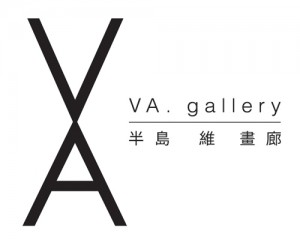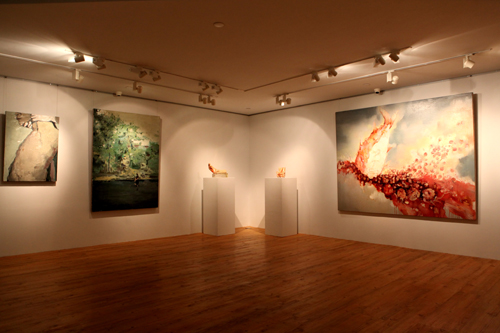The Way to Adopt Things
Zhu Qi
( from “Gallery” April, 2010)
In his solo show called Visible Tempreture in 2009, Cao Hui mixed the objects and organs to achieve a creepy feeling in visual effects. Cao brought people and animal’s organs and furniture together, and make the dead object become “live”. The organs in the works bring a sense of life and thus make the works itself become live and an illusion of tempreture of the works is shared amid in spectators.
Artists tries to find the connection between material and imagination. Unlike the traditional theory, Cao believes that the more materialized an object is, the more space an imagination can gain. The richness in reality is usually ignored and then the emotion that could trigger imagination is lost. Another feature in Cao’s works is that spectators could find their own experiences as they watch them. Cao adds his own experience gained under a certain social environment other than those meaningless conceptual forms.
Cao’s masterpiece always seem to hide something huge behind. By using the organs, which symbol lives that have restrained by certain objects, Cao’s works always link to the living experience and desire in the current era. “We live with our bodies and minds and react to the ourside world. All these are unique. They can not be still the same 200 years ago or after.” The artist says. Such kind of creation can be found similarity in Pop art, which manipulates objects to let them change into different forms. But Pop art is much closer to fashion and game, which makes art more lively and energetic. By contrast, Cao’s creation makes the objects strict and heavy. Cao explains:”I want the vision to become as rich as possible. Once the richness of vision is huge enough, the feeling can go deeply into people’s mind.”
What Cao express through his works is unusual in art world. While the mainstream heads to optimism, Cao bring mainly depression to spectators. In his opinion, experience is complicated, and people get various feelings is daily life. When Cao analysis his own experience and emotions, he finds that the most effective and inspiring feelings come from the subtle and internal scenes. “Depicting such emotions and scenes make me feel calm and satisfaction. In fact I don’t feel any pressure from my own creation, though the purport is to express something serious and firm.”
When Cao came to Beijing and started his campus life. Cao tried different fields in art, seeking for his major. Pure wool became the corner stone at last. In this work, Cao made a monkey wear sheep’s wool, and then dissected its skin, letting the inside organs expose outside. Such extreme practice analogizes the unrest for social relationship and natural relation. Cao supervises the society and digs the culture changes and psychology behind the modern world. “Prosperity and civilization are built upon cruelty. But as the society proceeds, the cruelty is cover by a culture coat.”
Cao is included into the surrealism artists. He thinks that realism gain more power at a certain period. Nevertheless, realism loses its influence once the environment and time change. “I want to use a more universal form to express my thoughts without any boundaries or barriers.”
Cao always chooses sculpture as the form of his creation. In recent years, academics keep finding a way to merge the traditional sculpture and contemporary art together. The language of sculpture contains shape and space in traditional understanding. But shape and space do not satisfy the contemporary art. And thus Cao endeavors to expand the field of sculpture. “I want to put more expressive skills to the traditional sculpture and and make the emotion of sculpture more real and more close to people. I think it would be perfect if I could make people feel the texture and tempreture, even smell.” But now Cao focus more on consumption goods as he uses clothes, handbags, sofa to create his works. Cao explains that he want to reflect the modern and prosperous world which has been materialized. “It is a consumption world and consumption has become part of our culture.” But Cao never gives an attitude to this real world. In his mind, art only reflects his vision of world. What he considers most is the way of his expression and extension of image.
As he use exposed organs to show the extremity of life, Cao’s works are considered to relate to religion. Cao expresses such religion—related element as his intuition and unavoidable, “Chinese sculpture can be divided into two types: worship usage and ceremony usage. Buddha-related sculptures always show the ideal side of the world, and folk clay sculpture show the festival side. Compared to these traditional sculptures, my sculpture is suitable for fete.” Some critics say that the Chinese contemporary art on one side is over-formalism and disjoints from the contemporary world. On the other side, those works reflected the environment are too surface and disjoints from people’s emotions. “As a society develops, people within it become more and more materialized and their desire gets bigger and bigger. But still we have to admit that it is really difficult to make a living.” Cao’s understanding of common people leads his works to a more down-to-earth form, calling people’s vibration.


